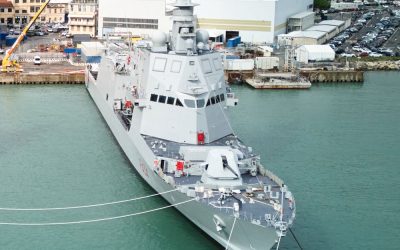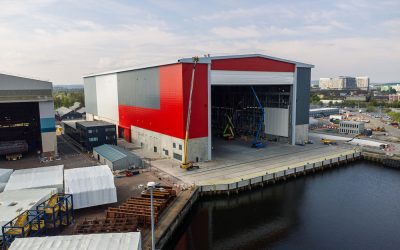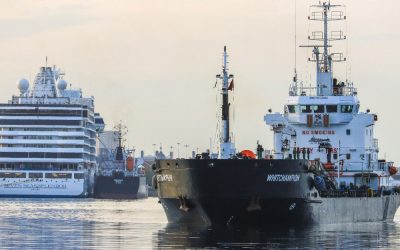Storm warning: digitalised platform could lighten the burden of heavy weather
Climate change is causing issues for the shipping industry. Sea surface temperatures and sea levels are rising, becoming a catalyst for major weather events. Tropical cyclones, which carry the potential to develop into hurricanes and typhoons, are becoming stronger while precipitation is intensifying. Rising sea levels are changing tidal circulation in shallow waters, leading to loading and unloading problems in ports, while the increased ocean energy is causing stronger waves and problems such as parametric rolling. All of this against the backdrop of ongoing efforts to improve fuel efficiency and reduce CO2 emissions.
Small wonder then that weather routing solutions are becoming an essential tool in mitigating risks and optimising savings, but it’s often a time-consuming and costly process. Traditionally, most weather routing is conducted by shore-based consultants, often themselves former seafarers, who will engage in protracted email exchanges with a ship’s captain to devise a suitable route, frequently with little input from other stakeholders, such as operators and charterers. Moreover, the expense involved often means that weather routing is often reserved for long-haul journeys, despite the potential benefits for shorter routes.
But with increased digitalisation and the application of Artificial Intelligence (AI) a new generation of cheaper, flexible and more user-friendly routing tools are starting to emerge. In late 2022, New York-headquartered voyage performance specialists OrbitMI officially launched Orbit Weather+, a cloud-based digital solution that allows users to generate as many automated alternative routes and scenarios as they please in a matter of moments, utilising dynamic weather data to obtain an immediate estimate of the potential cost and emission savings.
Orbit Weather+ is intended to serve as a scalable single-source-of-the-truth and speed up decision making. Powered by an array of Application Programme Interfaces (APIs) provided by compatriot weather data analytics company DTN, that utilises data from an array of different sources, including partner companies, third parties and publicly available information. With the current iteration of the product, users are able to optimise their route for speed, time and cost, although future releases will extend this capability to allow for optimisation of earnings, Carbon Intensity Indicator (CII) and other parameters.
Suitable for both tankers and dry cargo, it has already been extensively tested on several fleets during a pilot phase, including those of operator Western Bulk. After essential vessel data has been entered, a straightforward interface allows customers to input the point of departure and destination, along with the optimisation and calculation types (e.g. vessel speed). During a demonstration exercise shown to TNA, Orbit Weather+ was able to generate a route from Rotterdam to Houston in less than a minute.
This information can then be emailed to the ship’s master with a single click of the button and can be provided in RTZ file format that can theoretically be entered into the ship’s voyage planning software as an ECDIS overlay. While these routing capabilities are powered by the AI, users still have the option of consulting with a human analyst at any stage of the journey, although it’s not clear what this might add to the basic cost which the company says is around US$400 per month per vessel (on a subscription model that’s cancellable at any time). It’s envisaged that users will experiment with differing degrees of automated and analyst-based insight according to their particular needs.
OrbitMI is keen to stress the captain would remain the ultimate decision maker in routing decisions, but one of the tool’s biggest benefits, according to the company, is the ability for route information to be easily shared with operators and charterers. It adds that many charterers have enthused and expressed their wish to see even more capabilities added to Orbit Weather+ in the future. Nevertheless, this does raise the perennially thorny problem of undue commercial pressure being exerted over masters with regard to their routing choices, potentially undermining not only a vessel’s safety but also its emissions profile.
Still, as an economical option that negates the hassle of software installation and updating, while easily paying back its cost through the potential fuel savings, it seems more than likely that Orbit Weather+ is just the first of many automated routing solutions likely to emerge over the next few years.






